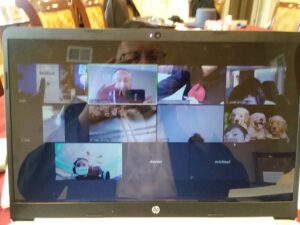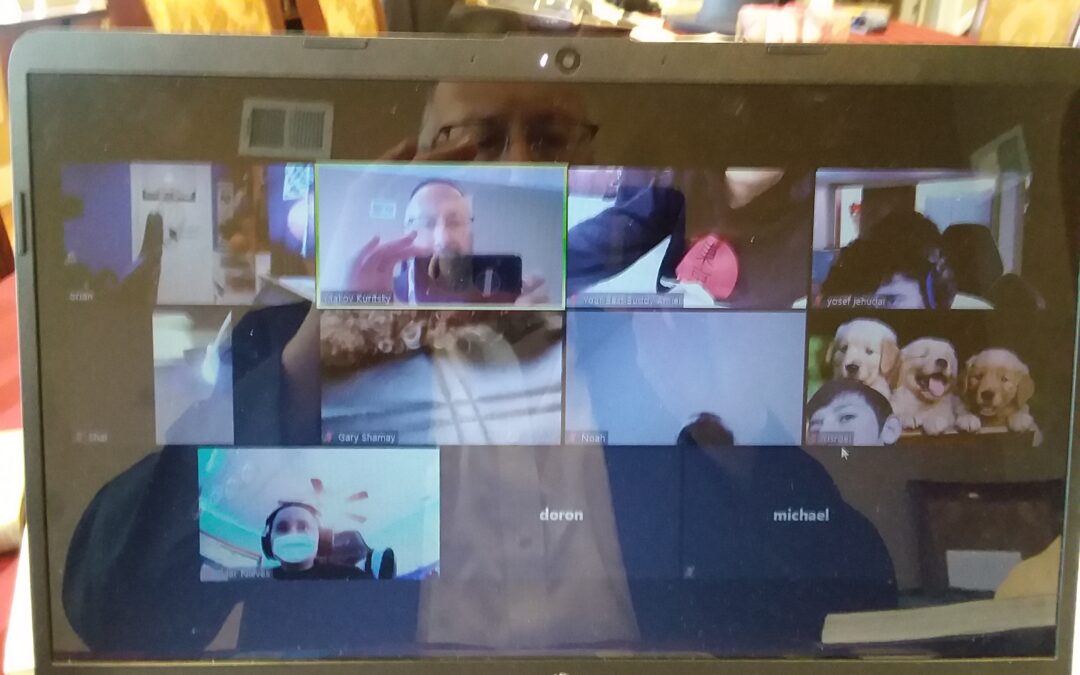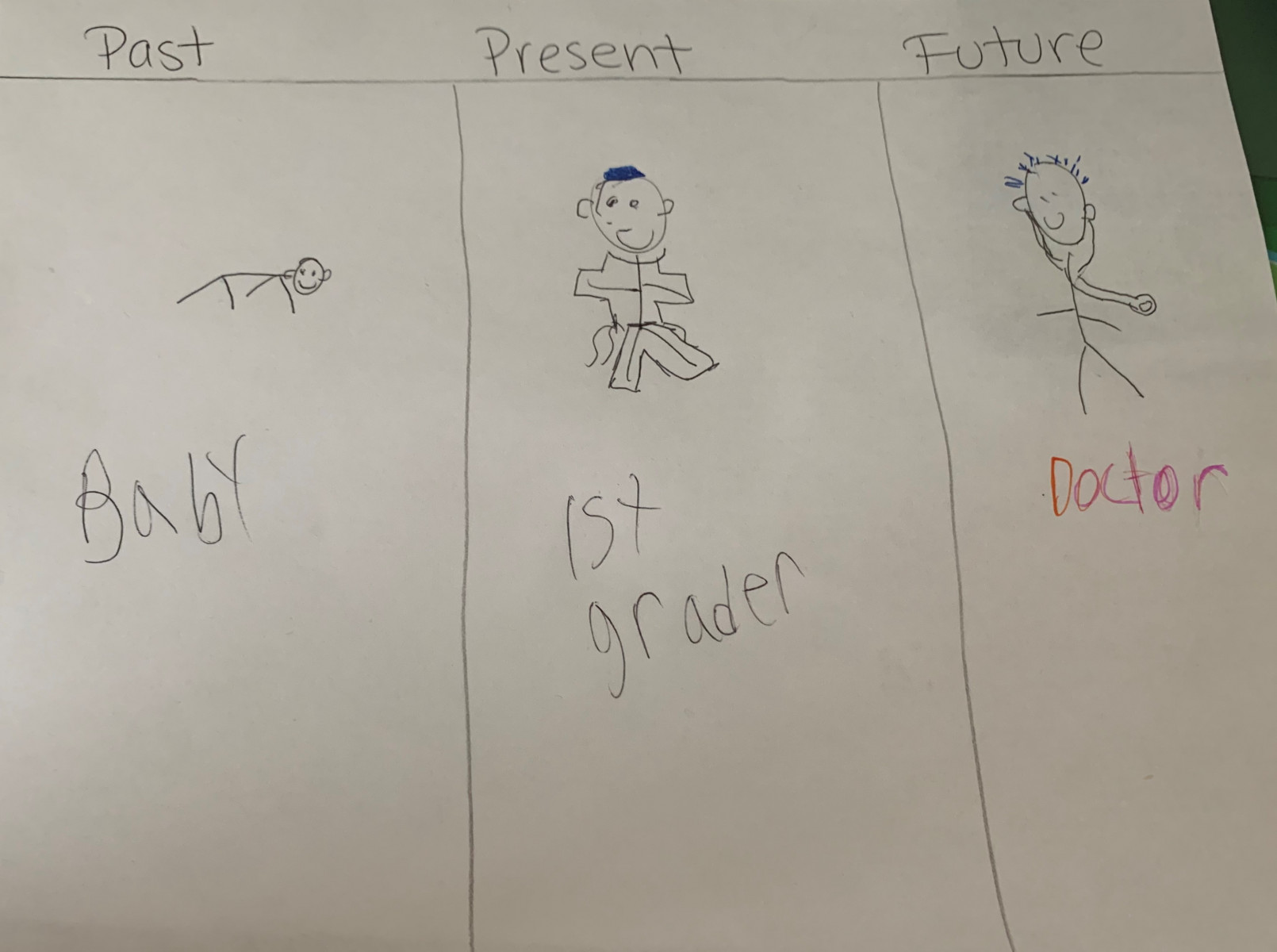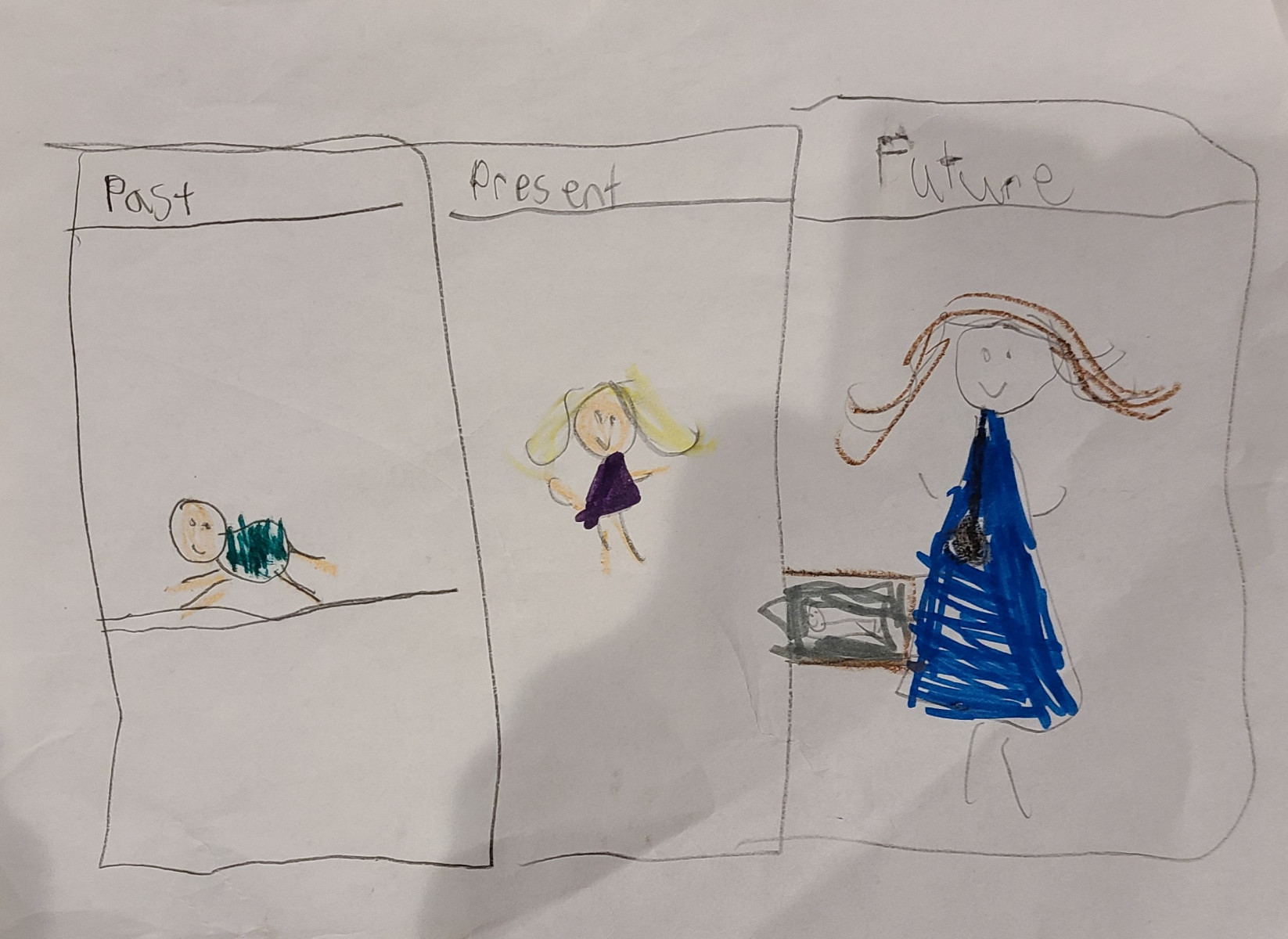Dvar Torah
Dvar Torah Parashat Vayikra
This week’s Parasha follows the building of the Mishkan with the details of the sacrifices that are to be brought to the Mishkan.There are many types of sacrifices;
Chatat if someone sinned inadvertently
Asham for certain sins
Olah for not fulfilling positive commandments
Sh’lamim [peace offerings] usually donated just for the sake of donating a sacrifice to G-d
Todah a sacrifice of thanks if someone crossed an ocean, got out of jail, was healed from a debilitating sickness, one who passed safely through a desert.
etc.
When the Torah introduces the idea of bringing a sacrifice, it begins with the sentence “Ish ki yakriv mikem” a man who will offer “from you”. Rashi comments that “from you” means that it can not be stolen.
The question is; what kind of a Mitzva would it be, any Mitzva, if it was stolen? What is the big news here that it can not be stolen?!
I heard from Rabbi Lopianski a Rosh Yeshiva in Silver Springs MAryland, a few years ago an answer with a real life parable. One time there was a wealthy diamond jeweler visiting Rabbi Lopianski from Belgium. In that duration, a young man also came and stopped by the Rabbi’s house for some guidance. They began chatting. The young man commented to the wealthy diamond jeweler “it is probably no big deal for you to make your wife happy. You just give her a piece of jewelry worth a few hundred or a few thousand dollars and she will be happy. The wealthy diamond dealer explained to the young man that that is not so at all. The wife wants to see that “you GAVE of YOURSELF”. For me a piece of jewelry worth a few hundred or even a few thousand dollars would not accomplish that at all! I would have to give her a piece of jewelry worth at least $50,000.00 to accomplish her seeing that I GAVE of MYSELF.
Explains Rabbi Lopianski, this is what the Torah is telling us about the sacrifice when it states that it can not be stolen. Perhaps the stolen [animal]m sacrifice is large meaty and fatty, but it will not accomplish the goal/purpose. The idea of a sacrifice is that G-d wants us to give of OURSELVES. If someone gives a stolen animal as a sacrifice he has given anything of himself.
Hashem does not NEED our Korban-our sacrifice. He wants us to recognize that what we have is from Him, and to “give back a little”-to show some appreciation. No matter how much or how little we think we have, we must show appreciation to Hashem and give of ourselves to Hashem. Whatever it may be, finances to charity, money to the poor or to a Torah institution, or visiting/helping the sick, we need to go a little out of our “comfort zone”. Let’s do a little for Him. He does so much for us.
Shabbat Shalom
Rabbi Y.S. Kuritsky
Programming News!
Dear parents.
We all had a wonderful week learning all about the Pesach (Passover) Seder and the Haggadah, remotely. We definitely wish it could’ve been in class, but thankfully we can at least learn on Zoom!
Upcoming events:
We are looking forward to every class having their own exciting Mock Seder this Tuesday. Please try your best to send your child to in-school learning that day, so they can participate in this amazing and educational Pesach Seder program. White shirts are recommended for all students to further the festive Pesach Seder atmosphere.
The annual Pesach Cleaning Contest is coming up!!
Every student will receive a Pesach Cleaning Checklist on Monday with the guidelines for cleaning and removing all Chometz from their rooms. Any student who follows the cleaning guidelines and emails in a picture of her room, ready for the holiday of Passover, will receive a special prize.
You can send in your child’s picture to [email protected].
Have a wonderful Shabbat and an enjoyable weekend!
Best regards,
Miss Dershowitz
Ms Esti
Judaics
Kindergarten and First Grade
We had a zooming week in Kindergarten and First Grade Judaics! This week we learnt about the different parts of the seder and haggadah. We colored, jumped, and drew as we learnt about Pesach! We are getting really good at singing the mah nishtana and we even have motions! We are looking forward to being in school next week and making all our Pesach projects like an afikomen bag and pesach pillow for leaning! Shabbat Shalom!
Second Grade
We had a busy week zooming away in 2nd grade. The children are working hard at preparing their Haggadahs and enjoyed watching some clips of Passover songs and stories. They can’t wait to ask you the Ma Nishtana (4 Questions G-d willing next week at your family Seder. Shabbat Shalom
Third Grade
Third grade is ready to greet the special holiday of Pesach. This week they learned all the details of the Pesach seder. They completed their Haggadah and are ready to help lead a meaningful seder. The class especially recalls looking for and finding the Afikoman which is the unanimous favorite part of the seder! They also enjoy singing all the Pesach songs like the 15 steps of the seder, the ma nishtana, avadim ayinu and the 10 makkot.
Shabbat Shalom
Morah Chaya
Fourth Grade
4b
Thank you Hashem for an amazing virtual week! And thank you, dear parents, for your involvement in making it all happen! We are knee deep in preparing our minds and hearts for the two grand events that are coming up next week- the Pesach Sedarim. We know the first few steps of how to run the Seder and in detail. We know that the most vital aspects of the Seder is the speaking of our wondrous redemption of Egypt, with all that that involves. Of course, we are spending the most time in Maggid, which is the section of the Haggadah that discusses these events. We want to be just like the great group of Rabbis that are mentioned in the beginning of Maggid who were so engrossed in talk of our redemption all night, they were surprised to notice that it was already morning! We summarize each Hebrew paragraph, and our becoming pros at note- taking even though its being virtual presents a bigger challenge. Our daily prayers have been beautiful, special shout out to Ariana Guz and Josh Nikolayevskiy for following along so diligently!
Shabbat Shalom!
Morah Toba
4a
Wow this week was totally focused on the upcoming Chag of Pesach.
We learned and reviewed the 4 names of Pesach, the date of Pesach, what we can and what we can not eat.
We began working inside of our Hagadda. We learned the 6 things on the Seder Plate (Kaara) and the reason for them.
We started from Kaddeish and we got all the way through the 4 kinds of children in Maggid.
We learned two new hebrew words of עבדות and חרות. Morah acted out the meaning of an eved and then showed the opposite cheirus – freedom like kings, and Morah dressed up like that as well. ( to the best of what can be done on zoom…)
These two words are the theme of Ma Nishtana – we are doing such opposite things on Seder Night in some ways we act like slaves עבד (Eating Matzo and Marror) and in some ways we act like kings – freedom חרות (dipping two times and leaning…)
We explained the answer to Ma Nishtana is עבדים היינו . In one night we went from being slaves to Pharaoh in Egypt to becoming the Price Nation among all nations to ה’! Hashem made this miracle!
The children have beautiful stickers to decorate their Haggadahs with!
Round of applause to all the children who joined us on zoom everyday, on time, and the whole time!
Shabbat Shalom,
Morah Bistritz
5th and 6th Girls
Dear parents.
Thank G-d, we had a wonderful week, learning all about Pesach (Passover) remotely. We’ve learned lots of the Haggadah and we are continuing to learn more and more.
Cleaning and readying our homes for Pesach (Passover), the 4 cups, Matzah, the importance of talking about Yetziat Mitzrayim (The Jewish nation’s miraculous exodus from Egypt). We are really enjoying learning all about the holiday.
We all practiced the Ma Nishtana, which are the 4 questions we ask our father at the Seder, to which there is an answer in the Haggadah. We enjoyed taking turns being the child and the father, singing the Ma Nishtana and answering the 4 questions. Make sure to have your children sing you the Ma Nishtana at the Seder – they’ll do a great job!
Next week will be a very exciting pre-Pesach week. Please try your best to have your children with us in the classroom, so they do not miss out on the many enjoyable and educational Pesach activities, which they will be unable to participate in remotely.
Have a wonderful weekend!
Shabbat Shalom!
Best regards,
Miss Dershowitz
5th and 6th Boys
This week we zoomed high and low.
Through the Haggadah,The laws of Pesach,Through the first Mishna Of the 3rd Perek Of Sukkah.
The boys really learned well, despite the challenges.
Looking forward to resuming in person!
Shabbat Shalom,
Rabbi Levy
7th and 8th Girls
We had another wonderful week here, thank you Hashem. We are knee deep in preparing our minds and hearts for the two grand events that are coming up next week- the Pesach Sedarim. We refreshed our memories on how to go through the steps of the Seder (reciting Kiddush, washing our hands, dipping vegetables into salt water, etc.) Most of our energy is spent on really understanding the deep meanings and symbols of various quotes and words that are found in the Haggadah. We see that the Haggadah contains worlds and worlds of meaning, inspiration and guidance. In one of the paragraphs regarding Hashem’s giving us the Torah, we learnt, Hashem is referred to as “Hamakom” – “the place”. This comes to show that Hashem is “the place in which all other things exist”. There is no centimeter of the universe that does not contain Hashem’s presence. The goal, we know, of the Seder is to strengthen our “Bitachon/ trust” muscle! We do make sure to each take a moment each day to express a specific thing that we are thankful to Hashem for. This is always a great activity, but especially during Pesach season or “Bitachon muscle” season, as thanking Hashem is a sure way of acknowledging all that He gives us, and this builds trust. Thank you to all of you who made the trip to school to get your daughter’s Haggadah, you get some merits of our learning.
Shabbat Shalom!
Morah Toba
7th and 8th Boys
7th and 8th grade Boys Judaics
Wow, what a week!
In the beginning it was slow moving, but then it began to “zoom”!
We covered some Laws of Lashon Hara. Laws of B’rachot. We learned about the Seder of Pesach night. Rabbi Kuritsky printed an outline and we discussed each part of the Seder and boys took notes. Some boys were even prudent enough to email their progress back to me to show me their work. Gary Shamay even typed his answers!
We discussed the Parasha, as well.
We had a really involved discussion regarding the different Minhagim [customs] of all of our families regarding which vegetable we use for Karpas, and Maror.
Not only are the boys involved, but even their pets!
Pets? yes!
We learned that Chometz is only a problem if it is fitting to be eaten by a dog!
If the food is so stale/moldy/rotten/spoiled that even a dog will not eat it, it is not a problem of.Chometz.
We now have “Rabbi Chewy” , “Rabbi Kai” “Rabbi Milo” Rabbi Goldie” etc.[boy’s pets who will decide whether or not a food item is still forbidden on Pesach.

Rebbie “C” [Rabbi Cohen from Chicago, Rabbi Kuritsky’s friend], visits our classroom [on zoom].


Rabbi Yosef {Robert] Cohen, a Rebbie in the 8th grade in Chicago’s Arie Crown Hebrew Day School, joined our zoom class on Monday. He shared a story with us that recently happened to him while visiting Texas. As he was going through security in the airport, the “TSA” questioned him about his “strings” hanging out of his shirt . The TSA said “Tzitzit?!
Rabbi Cohen responded “yes”. Then Rebbie C asked if the TSA was Jewish.
He responded negatively.The TSA then commented “two in the front and two in the back” [meaning that, that is the correct way to wear Tzitzit]. Again Rebbie C asked “are you Jewish” [he seemed to know such intricate, yet basic, Halachot]? He again responded negatively.
The lesson of the story “we Jews are not living in a “bubble” . We are living in a fish bowl! Yes! The gentiles are always watching to see how we are acting. We always must behave as proper Jew.
Even more amazing is the coincidence [we know there are no coincidences. Hashem is running the world and “pulling the strings’ ‘] that the 7th and 8th grade boys’ class are in the midst of learning Hilchot Tzitzit and in the middle of a “Tzitzit Challenge”!
Rabbi Kuritsky came into Staten Island [from Lakewood N.J., even though we were on zoom] and went from house to house to drop off beautiful Haggadahs for the boys to learn from and use at the Pesach Seder. Each Haggadah has the Jewish name of each student printed on the cover.
We look forward to learning more about the Seder in person, this coming week and enjoying a “model Seder”.
Elementary School
Kindergarten
This week kindergarten learned all about how to write a How-To. They wrote how to make pizza and donuts. They listened to nonfiction and fiction stories with examples of a How-To. They also played games to practice their sight words. In math they learned all about 3D shapes. They went on scavenger hunts, played games, and watched videos all about 3D shapes. They also reviewed addition and subtraction. In science they learned all about living and nonliving things. They discovered that all living things must do specific things in order to be classified as living. In social studies they reviewed what a community is, the types of places in their community, and they discussed the different types of community helpers.
First Grade
Our first graders were dynamic during our Distance Learning week. We completed our observation of water evaporation. We learned about adding and subtracting two-digit numbers. We read a story about a seal pup being rescued, and put all of the events in order. However, the highlight of the week was the making of students’ timelines. The first graders learned about the past, present, and future. They even created timelines about themselves! While the drawings are quite cute, I think we all agree that these students have bright futures ahead of them.
Second Grade
This week, on zoom, the second-graders were hard at work! The students have been finishing up a math unit on time by working with phrases like “quarter past” and “quarter to.” In ELA, the second-graders have been differentiating between fact and opinion, using contractions correctly, and working on becoming better proofreaders! They also started a brand new unit in social studies and have been learning all about the Native Americans who lived in America.
Third Grade
This week Grade 3 students finished their class novel. They are all excited to begin our new book after the holiday break, but have also requested the follow up books with Fudge’s many fiascoes to be added to our class library. During our math lessons, students worked on methods to solve word problems using money that involved multiplication. They also continued to develop ways to locate the perimeter and area of a shape. This week they concentrated on locating the area of irregular shapes through multiplication and arrays. They are even able to solve for areas using whole and half square units. During Grammar lessons, students reviewed multiple parts of speech with the focus on modifying action verbs into their present tense form. During our Russian lessons, students demonstrated their vocabulary skills by being victorious in the vocabulary jam. During our Social Studies lessons, students learned how the Aztecs were able to protect the City of Tenochtitlan with moats and drawbridges and grow food on mini islands made of plants.
Miss Sasha
Fourth Grade
4A
This week we continued to prepare for the ELA and Math state exams. In math we worked on adding, subtracting, estimating decimals and solved multi step word problems with decimals. We also started a new chapter The Tale of Despereaux. Kids are really enjoying this book.
4B
Zoom zoom zoom! Covid can’t stop 4B, as we take our learning virtual! During this week of zoom we have been focusing on test prep. In ELA, we prepare for the state test by completing released state test questions from previous years. We are also finishing up our unit on adjectives in grammar. In math, we are also doing state test prep by completing released questions from previous years, while also learning about decimals.
Fifth Grade
5th Grade
Greetings and salutations!
This week in ELA has been all about writing an argumentative essay. I am very happy to say that the 5th grade is doing a wonderful job composing their essays!
They also learned about subject pronouns, object pronouns, hyphens, and colons.
In social studies, the class rounded off their dive into the ancient Maya civilization. I am happy to say that there has been quite a few good discussions over what was learned.
This week I would like to commend Josh and Alec for their amazing work!
Middle School
Middle School ELA and Social Studies
6th graders had a busy week!
We continued our novel study of Bud, not Buddy. We also worked hard on revising our argumentative essays and turning them into finished products.
This week in social studies the 6th graders learned about the mighty Han dynasty. They were able to learn about many of the inventions of the Han dynasty such as the watermill and how paper was made.
I am happy to say that there have been some amazing class discussions this week!
This week I would like to commend Ethan and Lily for amazing participation in class.
7th Grade
This week has been all about our Argumentative Essay!
Students were reviewed revision, and revised our essays. We also continued our novel study of Farewell to Manzanar.
In Social Studies, students started learning about the trails to the west: Oregon, Stanta Fe, and Mormon trails! Students learned about the reasons why people moved out west. We also learned about the Texas Revolution and read primary sources of the era!
8th Grade
The 8th grade had a busy week!
In ELA, we continued our novel study of The Outsiders. We also reviewed revision, and revised our persuasive essays.
In Social Studies, we continued learning about the 1920s and then 1930s. We discussed the Prohibition, and talked about the beginning of the Great Depression. Students also read and analyzed primary sources from the era!
Middle School Math
8th grade learned how to make an equation from a chart.
8th grade honors finished chapter 6 on operations with polynomials.
7th grade honors learned how to determine if relationships are proportional or non proportional based on a chart, graph, and equation.
7th grade started the unit on statistics and have learned about biased questions.
6th grade learned how to solve one step equations.
5th grade started the unit on ratios and rates.
Middle School Science
7th Grade
Over the next couple of weeks students will be learning how our body systems function to maintain homeostasis. Students just finished up the Immune System and they all did well on their test. This week we are discovering the benefits and necessity of our skin. Students will be able to distinguish between the epidermis and the dermis, identify the functions of the skin and the role it plays to protect us from various pathogens and environmental toxins.
8th Grade Students
8th Grade will be investigating how humans are complex organisms that maintain a narrow set of internal conditions through a system of feedback and communication mechanisms between multiple organ systems. In this unit, students will explore how body systems interact to effectively monitor and respond to both internal and external environmental changes. Students complete both Making Connections (a NY State required lab) and a human thermoregulation laboratory, both of which focus on skills of experimental design.
Jewish History
7th grade learned about the sin of the Golden Calf, why the Jews sinned and how we are all responsible for our actions.
8th grade is busy as we figure out what caused the destruction of the second temple.




